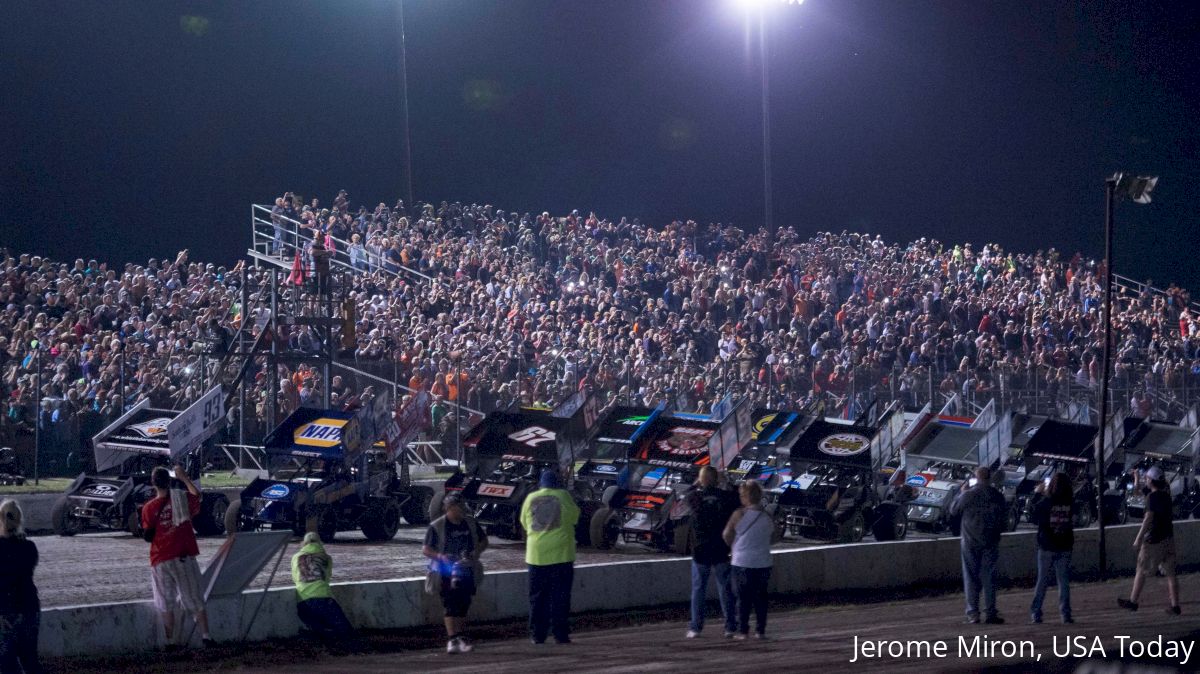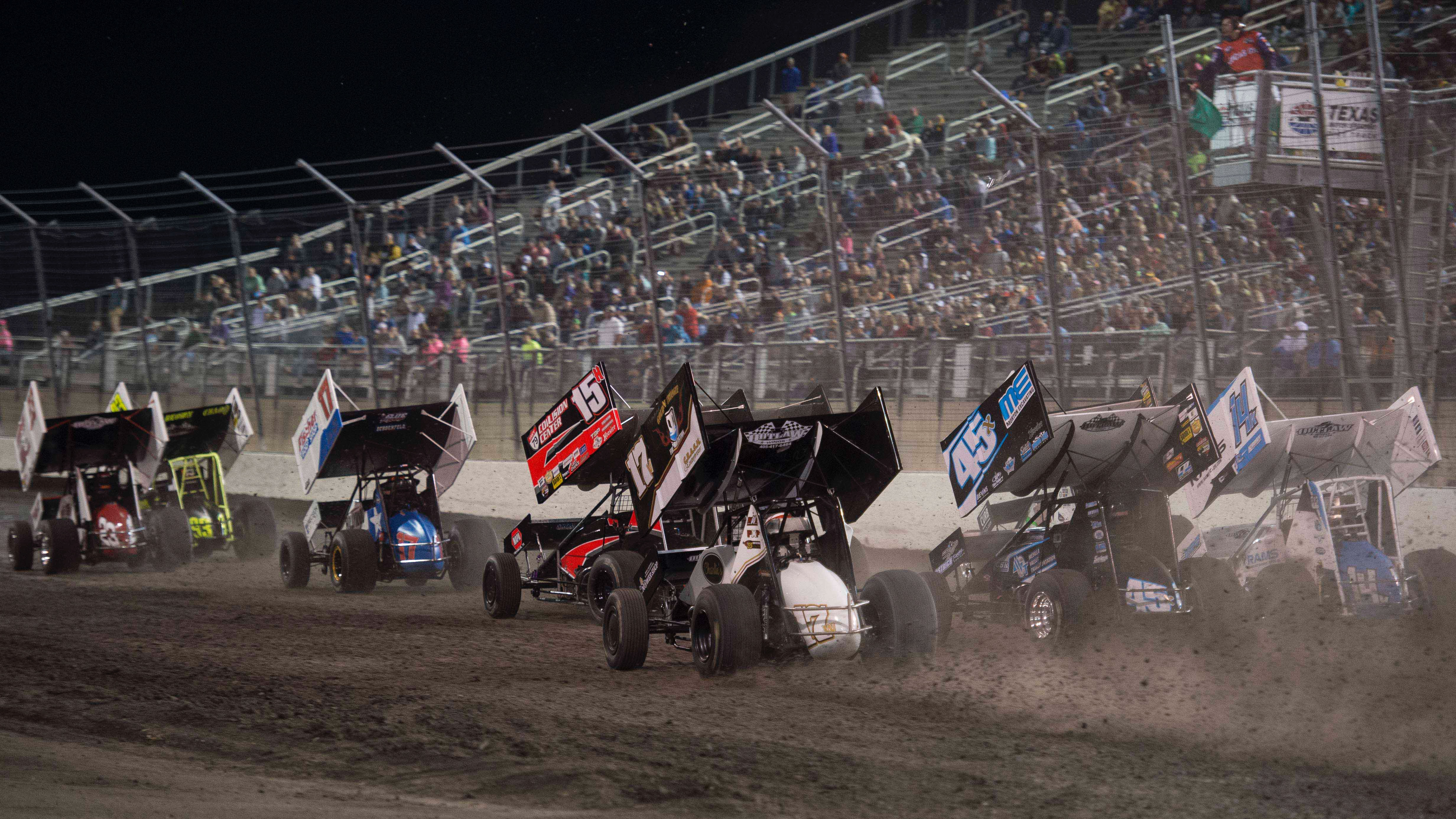Engagement Is One Key To Dirt Racing's Success And NASCAR's Decline
Engagement Is One Key To Dirt Racing's Success And NASCAR's Decline
Fan engagement begins at the grassroots level with the people directly connected with the industry, which is a lesson NASCAR needs to relearn.

By Jonathon Masters
The year was 2005, and I was on my way to Charlotte, North Carolina, to study motorsports management. It was a time of unrivaled exposure and popularity for NASCAR. Tracks were busy adding thousands of seats to fit ever-expanding crowds. Television coverage for the three main divisions was on par with any other national sport. NASCAR had turned itself into an entertainment juggernaut. A lot of people in the racing industry saw no end to this increasingly lucrative sport, but I saw something different.
It has been 12 years now since, and those boom times of NASCAR racing couldn't seem more distant. Those same tracks that couldn't wait to add additional seating to accommodate larger crowds are now removing them so the TV cameras don't catch sight of thousands of holes.
It seems not a week goes by without another marquee driver announcing early retirement.
The situation has led a lot of big names in the motorsports world to ask, "What happened?"
Meanwhile, at the national dirt late model events, things have never been better.

Sprint Cup Series driver Chase Elliott (24) passes Sprint Cup Series driver Kevin Harvick (4) for the lead during the Bank of America 500 at Charlotte Motor Speedway in Concord, NC, on Oct. 9, 2016. Peter Casey-USA TODAY Sports
If you have been to any major-sanctioned dirt race in the past four years, you most likely witnessed crowds packing the stands like never before. It has become commonplace for tracks to break attendance records in the stands whenever the traveling shows come to town.
Where are the falling crowds NASCAR has seen?
What is dirt racing doing right?
I first saw the seeds of NASCAR's problems in Charlotte during the mid-2000s.
For years, the races at the Charlotte Motor Speedway were some of the biggest events in racing. Their three NASCAR weekends each year were filled with racing festivities and thousands of fans.
People in the area felt like they were a part of the sport. The industry employed tens of thousands of people in the area and beyond. Teams, apparel vendors, independent part manufacturers, and other related industries kept people working and involved in NASCAR.
All those people had friends, family, and associates that found joy in their connections to such a large sporting tradition.

A view of the field during the American Sprint Car Series race at Texas Motor Speedway in Justin, Texas, on April 7, 2017. Jerome Miron-USA TODAY Sports
It was at the peak of this that forces inside NASCAR decided costs were out of control for teams. Some may say it was the sanctioning body attempting to consolidate power or control. Whatever it was, it shrank the size of the industry. Less people working in the sport meant less people felt a connection to it. They stopped coming to the track. Tune into a race at Charlotte now and you'll see empty seats and low enthusiasm.
This might not be the only factor that led to the sporting world's most fascinating slow motion train wreck, but it certainly is a factor. People will spend years debating and going over all aspects that built up to what we see now. It is clear that NASCAR underestimated the effect shrinking the industry would have on its crowds and fan base.
On the other hand, dirt racing has taken the opposite path, and the crowds have continued to grow. Ask any promoter and they will tell you that a good back gate usually leads to a good front gate. All of those drivers, crew members, and manufacturers have family and friends, and it's a sure bet they're going to be in the stands on Saturday night.
Dirt racing continues to encourage new manufacturers and innovations. The industry continues to grow in new and innovative ways. By just doing what they've always done, the dirt market has found the hidden key to increased attendance. Today's startup shock rebuild shop is tomorrow's 10-employee business that could add 80 people to the stands at the local bull ring.
Jonathon Masters has a lifelong connection with dirt racing. His family has owned and operated MasterSbilt Race Cars manufacturing dirt late model chassis for 35 years. He attended college in North Carolina for motor sports management and has written for various industry publications. Jonathon was an account executive at The International Motorsports Industry Show, founder of the Heartland Auto Racing Show, and has been a racing industry professional for over a decade.
The year was 2005, and I was on my way to Charlotte, North Carolina, to study motorsports management. It was a time of unrivaled exposure and popularity for NASCAR. Tracks were busy adding thousands of seats to fit ever-expanding crowds. Television coverage for the three main divisions was on par with any other national sport. NASCAR had turned itself into an entertainment juggernaut. A lot of people in the racing industry saw no end to this increasingly lucrative sport, but I saw something different.
It has been 12 years now since, and those boom times of NASCAR racing couldn't seem more distant. Those same tracks that couldn't wait to add additional seating to accommodate larger crowds are now removing them so the TV cameras don't catch sight of thousands of holes.
It seems not a week goes by without another marquee driver announcing early retirement.
The situation has led a lot of big names in the motorsports world to ask, "What happened?"
Meanwhile, at the national dirt late model events, things have never been better.

Sprint Cup Series driver Chase Elliott (24) passes Sprint Cup Series driver Kevin Harvick (4) for the lead during the Bank of America 500 at Charlotte Motor Speedway in Concord, NC, on Oct. 9, 2016. Peter Casey-USA TODAY Sports
If you have been to any major-sanctioned dirt race in the past four years, you most likely witnessed crowds packing the stands like never before. It has become commonplace for tracks to break attendance records in the stands whenever the traveling shows come to town.
Where are the falling crowds NASCAR has seen?
What is dirt racing doing right?
I first saw the seeds of NASCAR's problems in Charlotte during the mid-2000s.
For years, the races at the Charlotte Motor Speedway were some of the biggest events in racing. Their three NASCAR weekends each year were filled with racing festivities and thousands of fans.
People in the area felt like they were a part of the sport. The industry employed tens of thousands of people in the area and beyond. Teams, apparel vendors, independent part manufacturers, and other related industries kept people working and involved in NASCAR.
All those people had friends, family, and associates that found joy in their connections to such a large sporting tradition.

A view of the field during the American Sprint Car Series race at Texas Motor Speedway in Justin, Texas, on April 7, 2017. Jerome Miron-USA TODAY Sports
It was at the peak of this that forces inside NASCAR decided costs were out of control for teams. Some may say it was the sanctioning body attempting to consolidate power or control. Whatever it was, it shrank the size of the industry. Less people working in the sport meant less people felt a connection to it. They stopped coming to the track. Tune into a race at Charlotte now and you'll see empty seats and low enthusiasm.
This might not be the only factor that led to the sporting world's most fascinating slow motion train wreck, but it certainly is a factor. People will spend years debating and going over all aspects that built up to what we see now. It is clear that NASCAR underestimated the effect shrinking the industry would have on its crowds and fan base.
On the other hand, dirt racing has taken the opposite path, and the crowds have continued to grow. Ask any promoter and they will tell you that a good back gate usually leads to a good front gate. All of those drivers, crew members, and manufacturers have family and friends, and it's a sure bet they're going to be in the stands on Saturday night.
Dirt racing continues to encourage new manufacturers and innovations. The industry continues to grow in new and innovative ways. By just doing what they've always done, the dirt market has found the hidden key to increased attendance. Today's startup shock rebuild shop is tomorrow's 10-employee business that could add 80 people to the stands at the local bull ring.
Jonathon Masters has a lifelong connection with dirt racing. His family has owned and operated MasterSbilt Race Cars manufacturing dirt late model chassis for 35 years. He attended college in North Carolina for motor sports management and has written for various industry publications. Jonathon was an account executive at The International Motorsports Industry Show, founder of the Heartland Auto Racing Show, and has been a racing industry professional for over a decade.